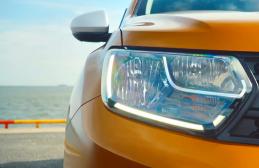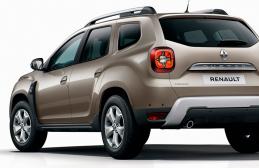History of Rolls-Royce
2 (40%) 1 review[s]Rolls-Royce Limited is a well-known English automobile, and later an airline. The entire range of Rolls Royce.
Story
Henry Royce made his first car, the two-cylinder Royce 10 at his Manchester facility in 1904. He presented his product to the owner of the dealer company CSRolls & Co. Fulham to Charles Rolls, who was impressed by the Royce 10. An agreement was made that CSRolls & Co. Will be engaged in the implementation of the entire product line of Royce. It included at that time four models.
All cars were branded Rolls Royce and sold exclusively by Rolls. The first Rolls Royce 10 hp was introduced in Paris in December 1904. Rolls-Royce Limited was formed on March 15, 1906, by which time it became obvious that new industrial premises. The new plant was largely designed by Reuss and production began in 1908.
In 1906, Royce developed an improved six-cylinder model called the 40/50 hp, which was the first product of the new company. This model was in demand and a total of more than 6,000 cars were sold. In 1925, 40/50 was renamed Silver Ghost. In 1921, the company opened a second plant in Springfield, Massachusetts.
After World War I, faced with declining sales of the Silver Ghost, the company introduced the cheaper Twenty in 1922. In 1931, Rolls-Royce acquires Bentley, which was unable to cope with the onset of the Great Depression. From then until 2002, Bentley and Rolls-Royce cars are often similar down to the grille and small details.
The production of Rolls Royce and Bentley cars moved to Crewe in 1946, where the company began to assemble cars completely. Previously, the company mainly produced only the chassis, leaving body production to other manufacturers. The company was so successful that by the 50s its products were used exclusively by the aristocracy and even the royal house.
The laid foundation lasted until the sixties, but the financial situation was getting worse, and by February 1971 the company went bankrupt. But the government saved the day because the Rolls-Royce was considered a national treasure. However, the company was divided into a division for the production of cars and components and aviation.
Another crisis happened in 1980 and this time the Vickers concern saved the day by buying Rolls-Royce Motor Cars Limited. Upgrading the equipment, Rolls-Royce released the Silver Seraph, which was designed using the latest technologies and saw the light in 1998. However, the reforms did not affect the manual assembly method inherent in Rolls-Royce and work exclusively on pre-orders.
Rolls-Royce Motor Cars Limited was established as a wholly owned subsidiary of BMW AG in 1998 following BMW's purchase of the license rights to the brand name, logo and branding from Rolls-Royce. Rolls-Royce Motor Cars Limited has been manufacturing Rolls-Royce branded vehicles since 2003.
Products
Phantom
Since 2003 4-door sedan. The car has a 6.75 L V12 engine manufactured by BMW installed only on this model. Rich leather interior, fine wood interior trim is carried out at a new plant in Goodwood.

How did the car that became an absolute symbol of success
Now on the Russian streets it is quite difficult to meet Rolls-Royce car- it has become an exotic toy for very, very rich people. But back in the twentieth century, everything was different - all the major leaders of that era, from Nicholas II to Lenin, had their own Rolls-Royces, party officials traveled in these cars, and over time, when the cars wore out, they were handed over "to the people" - heads of collective farms or state farms.
The history of this brand is the story of an amazingly successful union of two businessmen, Charles Rolls and Henry Royce. One of them was a wealthy aristocrat, and the other grew up in poverty and spent only a year in school, but together they created a car that has become an absolute symbol of success.
We tell you how Rolls-Royce appeared, how it is connected with Russia, and what exactly helped the brand to go through bankruptcy, but survive.
The Rolls-Royce company name is made up of two surnames. These are the names of the founding fathers of the company - Charles Rolls and Henry Royce. The history of their brand is a classic case of a successful business alliance between an investor and an inventor.
Rich man and poor man
An interesting fact: the names of a rich man and a poor man met in the name of the company. The first is the name of the rich man - Charles Rolls. He was born into a family of hereditary aristocrats from Wales, received two higher educations and was interested in cars from childhood - he even became the first student at Cambridge who had his own car. After graduation, he opened his own company, which was engaged in the import of cars, it was founded in 1902 and became known as C.S. Rolls & Co. But ordinary imports seemed to Rolls not enough, he dreamed of creating his own car.
The second surname in the brand name - Royce - belongs to Henry Royce, the founder and first engineer of the company. Unlike Rolls, Royce was born into a poor, practically impoverished family: from the age of ten he worked as a paperboy and postman. At the same time, Royce understood that without education he would not be able to achieve anything in life, so in his spare time he studied French and German, electrical engineering and mathematics. At the age of 16, despite the lack of a diploma (what diploma, if he graduated from only one class of school), Royce got a job in Maxim Hiram's company as an engineer. This work helped him to accumulate initial capital and set up his own business - a mechanical workshop Royce & Co. But just a workshop is not enough for Royce: like Rolls, he dreams of his own car.
Acquaintance
In 1904, Rolls Royce met. The year before, Royce's workshop produced three cars with a capacity of 10 Horse power. There were no particularly new technical solutions in the cars, but they looked good and were distinguished by excellent assembly and reliable details.
Cars made a splash in England - all local newspapers wrote about them, and a little later - the world ones. The fame was so great that an article about these cars even appeared in the Russian magazine Za Rulem. Charles Rolls also heard about these cars, who at that moment was just looking for an engineer who could help him develop his own car. On May 1, 1904, an agreement was signed between Rolls and Royce at the Midland Restaurant. This day is considered the official founding of Rolls-Royce.
Brand features and the first car
Distinctive Rolls-Royce features from the very beginning was the reliability of cars. First real model The company was shown at the international transport exhibition in 1906 - it was a car with a very powerful steel frame, a 7-liter engine and six cylinders arranged in a row.
At the same time, the power was not disclosed, and this gave rise to the tradition of indicating power as “sufficient” (the brand got rid of the tradition only in the last few decades). The car was called Rolls-Royce 40/50 HP and was positioned as "the most reliable car worldwide".
Logo and advertising
Initially, the founders of the company launched a logo in the form of large red letters RR, but pretty soon the color was changed to black to “emphasize prestige and luxury.” However, the symbol of the brand was not the letters RR, but the famous figurine on the hood called "The Spirit of Ecstasy".
The figurine appeared like this: in 1909, Lord Sir John Montagu bought one of the company's cars. To make his car different from others, he commissioned a mascot figurine from the sculptor Charles Sykes. The artist created the sculpture "The Spirit of Ecstasy" - a girl looking forward. Charles Rolls liked the figurine so much that he obtained permission to use it on all brand cars.
Rolls-Royce was positioned from the very beginning as "the best in the whole world", the most reliable cars. This was emphasized during advertising campaigns: no matter how much you use the car, you will not be able to break it. Such a case is known: businessman Claude Johnson, who doubted the veracity of advertising, went on a run in the first car of the brand. The run was organized specifically in order to identify the shortcomings of the car, but after 15,000 miles (that's about 24,000 kilometers), only one part broke - a fuel valve worth 2 pounds. At the same time, the businessman drove most of the way at a speed of 120 km / h.
Successes and failures
For almost 50 years, until the end of the 1950s, the brand felt extremely confident - Rolls-Royce formed the image of a premium British car, which was driven by businessmen, celebrities and even representatives of the monarchy. So, the fourth and fifth generation Phantom models were used by the royal family, and this was an excellent advertisement and led to a sharp increase in sales that year.
The company prospered even during the Great Depression - sales in the 30s were so good that the company was even able to absorb Bentley, which was then its main competitor.
Everything changed in 1960: another crisis was raging in the world, but Rolls-Royce seemed such a stable brand that the administration decided not to rewrite the business strategy for the economic downturn. Moreover, the company began work on two large-scale projects at once - the release of a new car model and the creation jet engine. However, managers miscalculated: during the crisis, the number of buyers decreased, and new developments were unclaimed. As a result, the brand took loans from several banks and subsequently went bankrupt.
The rescue
In 1971, the company was officially declared insolvent. However, the British public could not allow the closure of Rolls-Royce - the brand was considered a symbol of the country and a national treasure. As a result, the state was forced to pay $250 million to repay the firm's loans.
From that moment, bidding for the company began. Bidders for the purchase were BMW, Volkswagen and Daimler-Benz. Bidding was incredibly tense, and the deal was canceled several times: first, Daimler-Benz left the struggle, which decided to develop its own Maybach brand. Then BMW and Volkswagen increased the amount of the deal several times in order to beat the competitor's price. After several months of negotiations, a compromise was reached: BMW bought the Rolls-Royce brand directly, and Volkswagen received the rights to Bentley.
Rolls Royce now
Rolls-Royce is now one of the most expensive cars in a world that is bought not so much for reliability, but to demonstrate status and social position. However, the efforts BMW brand overcame the crisis and became profitable again. The company sells several thousand cars annually, and in Russia last year they sold more than a hundred cars.
“For successful entrepreneurs in Russia, the Rolls-Royce brand remains the ultimate symbol of success,” said James Crichton, regional director of the brand.
What associations do you have when you hear the name of this automobile brand Rolls-Royce? Luxury, prestige, comfort, reliability? You are absolutely right. All this invariably characterizes the cars produced for more than a hundred years by Rolls-Royce, the story of which we will tell.
Rolls-Royce cars have become a real legend these days. Over the entire history of this brand, a little more than 20 models have been released. This is what distinguishes the company from other well-known car manufacturers, which are constantly releasing more and more new models. But Rolls-Royce has always cared not about the number of brands, but about their quality. The company has always identified the brand with prestige in the first place. This trend has continued to this day. The company strives to bring each model to literally perfection.
Rolls-Royce makes few models. It is because of this that each model of the company literally turns into a legend of its time. Even if the release of the car happened a long time ago, the cars still sell well. In the twentieth century, these British cars were very popular with show business stars, famous politicians and businessmen around the world.
How did it all start?

One of the founders is Charles Stuart Rolls.
The founders of Rolls-Royce were Charles Stuart Rolls (Charles Rolls) and Frederick Henry Royce (Frederick Henry Royce), whose names made up the name of the brand, and their initial letters - the logo - two interlaced letters "R" on a red background, which changed to black after the death of Henry Royce. The founding fathers, in fact, laid down all the stages of the company's development. It often happens that a business is organized by people who have been friends since childhood. Here it was not so at all. They not only did not know each other, but also came, one might say, from opposite strata of society. But they were able to unite. Thus, they ensured the birth of the luxury car twentieth century.
Frederick Royce was born in Alvator, Lincolnshire on March 27, 1863. As a child, he could not even dream of becoming a respected and very rich man. His father was a miller, but he went bankrupt very quickly. Already at the age of 10, Frederick was forced to start working. What only in those days he did not have to do! He had a chance to work as a peddler of newspapers and telegrams. He also worked on the railroad.
But, despite the fact that Frederick was forced to start working very early, he did not lose his desire to learn. He understood perfectly well that his whole future depended on the knowledge that he would be able to obtain. In his free time, Royce mastered the basics of electrical engineering, studied mathematics and foreign languages. He was especially interested in electrical engineering. Royce had an engineering mind. He enjoyed this job immensely.

Frederick Henry Royce
The first job that was directly related to Royce's hobby was a position in Hiram Maxim's company, the owner of which is known throughout the world as the inventor of the machine gun named after him. Royce liked this job very much. But he did not leave the dream of creating his own company. From the very beginning, he began to save money. It was they who were to become the starting capital for his future company.
In the end, his dream came true. Together with a friend, Royce organized the firm F.H. in Manchester. Royce & Co. The company was doing very well. In 1903, Royce purchased his first car. This was a turning point in the company's history. He bought a French Decauville car. The car was just terrible. Technical problems, which constantly arose when using the car, caused Frederick's indignation. For his soul as an engineer, this was simply unbearable. The matter ended with the fact that Royce decided to create his own car, which would completely suit him.
Frederick turned out to be a truly brilliant engineer. Just a year later, he managed to present his car. The press spoke about the car very well, as it was incomparably better. french cars. The car was very reliable, had excellent driving performance and cost only 395 pounds. Of course, in those days it was a lot of money. But they cannot be compared with the amounts that, after some time, became necessary to buy a Rolls-Royce car.
Charles Rolls had a different life. He came from a very rich and distinguished family. Rolls received an excellent education. He had diplomas from Cambridge and Eton. Rolls became interested in engineering during his studies. Rolls' first car was the Peugeot Phaeton, which his father bought for him while studying at Cambridge. Charles quickly managed to master this car. Moreover, he very often took part in various races. Once he even managed to set a world speed record.
Rolls' love for cars was truly boundless. And it is not surprising that after graduation, he decided to connect his life with cars. He opened a company that sold cars.
In 1902, C.S. Rolls & Co. was organized. Basically this company was engaged in sale of cars. For her work, Rolls managed to attract Claude Johnson, a man very famous in this industry. The company was doing great. Very soon, the Rolls company became one of the largest British car dealers.
Although Rolls began its activities by selling finished cars, he continued to dream of creating such a machine that would glorify his name. He did not at all seek to organize production from scratch. He wanted to find a small but talented firm that could become his partner. The Manchester F.H. turned out to be such a firm. Royce & Co.
Frederick Royce and Charles Rolls met in 1904. They managed to reach an agreement very quickly, despite the fact that Rolls was in a very skeptical mood during the trip to Manchester. He left the city with a signed cooperation agreement. Very soon, the first cars of joint development were presented to the public. The press and critics spoke very well of them. Already at the end of the year, a joint company Rolls-Royce was organized.
The sale of the first cars went very briskly. Royce created wonderful technical point view of cars. Rolls knew how to trade them. At this time, he already had a very large network of distributors. With her help, cars spread throughout the country without any problems. It should be noted that the company was not at all going to work only in the UK. Very soon, the company's cars began to be sold in Europe. In 1906, the car was demonstrated to New York. The Americans accepted this car with great enthusiasm.
It should be noted one very important point. The powers were completely distributed between the founders of the company. The famous Larry Ellison very often said that a person can be either a merchant or a creator. Therefore, it is desirable to understand as quickly as possible who you really are, and to select partners so that they complement your abilities in another area. Royce was the founder of this firm. It was a truly ingenious engineer who designed beautiful cars. Rolls sold them. One of the main secrets of the company's success, most likely, was precisely the fact that the founders of the company complemented each other perfectly.

Rolls-Royce Silver Ghost 1906.
In November 1904, Rolls-Royce presented its first two-cylinder creation to the world and from that moment began its triumphant march through the automobile market in Britain and other countries. With racing victories, luxury cars were gaining more and more success among wealthy Britons, who in 1906 were introduced to the new Rolls-Royce Silver Ghost. This car made a splash, but the most interesting was yet to come…
A trip to the USA had a great influence on the company's activities. And it was not only the excellent success in sales. In the US, Royce met the Wright brothers. Aviation immediately completely captured his heart. He became seriously interested in flying. Charles very quickly learned to fly the plane. He even managed to become famous for flying across the English Channel.
This hobby soon turned into a business. The company begins to manufacture aircraft engines, which it still does very successfully. This direction of the company's activity helped it a lot to survive during the First World War, when the demand for expensive cars sharply decreased.
But in 1910, the company suffered a terrible blow. At 33, Charles Rolls crashed his airplane. From that time on, the company completely becomes the property of Royce with all its problems.
At this time, the company's cars became very popular in sports. The heart of Europeans is beginning to own the race. Cars of the company become the main participants and winners of all major competitions. It is for these successes that after some time Frederick Royce will become a knight.

In 1925, the Rolls-Royce Phantom I saw the light - an imposing and very expensive car, equipped with a six-cylinder overhead valve engine with a volume of 7668 cubic centimeters, clearly not suitable for the outdated chassis.
Only 3463 of these cars were produced, and already in 1929 the Phantom I was replaced by the Phantom II. This device with an updated chassis developed a speed of up to 120 km / h and was produced until the appearance of the Phantom III in 1935. The new Phantom received a V-shaped 12 cylinder engine with the ability to reach speeds of 148 km / h. He became latest model Rolls-Royce, produced before the war, and also the last of a line of cars completely designed and manufactured by the company.
Meanwhile, in 1933, Roytsch died. From this moment begins the history of the company without its founders.
What has Rolls-Royce become?
The foundation of the brand was laid by Rolls and Royce. They formed the basic principles of the company and made it known throughout the world. But in our time, company cars are not just a toy for a well-to-do public. It's something more. Now this car demonstrates the status of its owner, his chosenness.
It's pure English car intended for the aristocracy. This car was owned by the real cream of society. For instance, Hollywood stars they were very fond of being photographed in front of their Rolls-Royces, thus providing additional free advertising for the company. There were times when the purchase of such a car was considered as a sign of bad taste. If in the social hierarchy you do not correspond to this car, it is better not to try to purchase it.
It should be noted that, among other things, the company's cars had a truly amazing quality. All these cars were assembled by hand. All parts of the machines are brought to perfection. Rolls-Royce can best be summed up in two words: a standard of excellence.
An impeccable reputation helped Rolls-Royce survive the Great Depression of the 30s without loss. But, Bentley got into a very difficult situation, her business began to decline sharply, which ultimately led to bankruptcy. The management thought about the service of reupholstering furniture, which they could provide at their factories.
Therefore, in 1931, the management of Rolls-Royce decided to buy all its assets. Thanks to this, the Bentley brand, which produces sports cars, still exists.
With the death of one of the founders, as well as the outbreak of World War II, Rolls-Royce significantly slowed down the pace of car production. But already in 1949 it was launched in mass production Rolls-Royce Silver Dawn, and a year later, another novelty of the automotive market appeared - Silver Cloud.
Also in 1950, the production of the Phantom IV began, intended exclusively for members royal family and the first persons of the states. This car could reach speeds of up to 160 km / h, however, its value was not in this, but in the ability to drive for a long time at walking speed during official ceremonies and not overheat, this was made possible thanks to a well-thought-out engine cooling system.

And in 1959, an even more majestic and perfect one appeared. Phantom V, it had, characteristic of all Phantom cars, not too much space for the driver, but a truly huge and luxurious space for aristocratic passengers.
The year 1968 was marked for Rolls-Royce with the release of the Phantom VI, whose engine power was traditionally not announced, but maximum speed, equal to 180 km / h, spoke for itself. The car was produced exclusively in limousine and landole bodies. This Phantom model was discontinued only in 1992.
In the early 1970s, Rolls-Royce suffered a crisis, and in February 1971 it officially declared itself bankrupt. However, the British government could not lose the pride of its car industry and, in order to save Rolls-Royce, invested about $ 250 million in the matter.
And in the same year, the company again began to produce cars. The first model to appear after the crisis was the Rolls-Royce Corniche, a first-class coupe-cabriolet that lasted for automotive market up until 1995.

In 1975, Rolls-Royce for the first time put into serial production a car, the body of which was completely designed by foreign designers from the Italian Pininfarina bureau. This car was the Rolls-Royce Camague, equipped with an eight-cylinder V-engine, independent suspension and automatic transmission.
On the Geneva car exhibition In 1977, the Rolls-Royce Silver Wraith II four-door limousine was first introduced. Following him in 1982, two more models of the "silver series" appeared: Silver Spirit and Silver Spur. Rolls-Royce Silver Spur has gained particular popularity among wealthy Americans.
The international show in Frankfurt, held in September 1991, also did not do without a novelty from Rolls-Royce. The Park Ward model, intended only for representative purposes, was made in the back of a "limousine" for 6-7 passengers.
In 1994, Rolls-Royce celebrated its 90th anniversary. She decided to celebrate this event with the release of a limited edition of a specially designed Rolls-Royce Flying Spur model. Only 50 of these cars were produced and all of them quickly dispersed around the world.
The most prestigious model of the company was the Rolls-Royce Silver Spur II Touring Limousine. The production of cars of this brand does not exceed 25 per year, because such a luxury, worth about 300 thousand dollars, is available only to the real elite of society.

Rolls-Royce Silver Seraph, which appeared in 1998, became a fundamental novelty of the company, the development of which began in 1994. The year of release of this model coincided with the transfer of control over the company to German concern bmw.
Brand Bentley, as well as all automobile factories The Crewe were taken over by Volkswagen Group group.
In January 2003, the Rolls-Royce trademark was completely transferred to BMW. In 2004, on the centenary of the company, the current German owners, together with the British, released a model called the Rolls-Royce 100EX, which marked a round date.
The transition to another concern in no way interfered with the development of the Rolls-Royce brand. It still holds the leading position in its luxury car segment and continues to enjoy unwavering popularity among Hollywood celebrities and aristocratic families around the world.
There are still many legends around the history of Rolls-Royce, most of which are true. Each assembled car subjected to tests in the form of two thousand kilometers of a test run, and then again dismantled, each of its parts is carefully checked and only after that the body is painted and final assembly takes place.
By the way, coloring is carried out in 12 layers of nitro paint, because. synthetics do not give a sense of color depth, with each layer being polished before the next is applied. Each figure on the hood is also in without fail undergoes a polishing procedure ... with the powder of crushed cherry pits.
And most importantly: Rolls-Royce is assembled only in the UK. Still, because he is a real, purebred British aristocrat.

Based on the new Phantom in 2006, a convertible model was created called drophead coupe with aluminum alloy body. The novelty received a proprietary design, a suspension from the 7th generation of the Phantom (fully independent pneumatic active suspension) and the same 6.75-liter 453-horsepower engine.
In 2008, a new Phantom Coupe was released, based on the 101EX concept. The serial novelty received front pillars made of polished aluminum, 21-inch wheel disks and a 453-horsepower engine, aggregated 6-speed automatic transmission.
In the fall of 2009, the British automaker introduced its new model under the legendary Ghost name. Specifications car impress: 12-cylinder Gas engine with a volume of 6.6 liters and a power of 563 hp. allows you to accelerate the car to 100 km / h in 4.9 seconds. Also worth mentioning is the 8-speed automatic box gears and innovative suspension with adaptive dampers.

World premiere car Rolls-Royce Ghost, was held as part of the Shanghai Auto Show in 2011.
New in comparison with the original 17 cm stretched wheelbase. Another innovation is the possibility of ordering a glass panoramic roof.
The technical equipment of this car remains the same. Representatives of Rolls-Royce say that the novelty is intended for those who need the basic version Phantom car seems too big.
Cars of the Rolls-Royce brand and to this day remain a symbol of elitism and refined taste. All models of the company pass 2000 kilometers, then they are disassembled. All parts of the car are stamped by the workers who made them. These parts and assemblies are carefully checked, the body of the car is painted, and the car is reassembled. The quality of the brand's cars is evidenced by the fact that 60% of all cars produced so far are "on the go".
In general, it would be interesting to know how much tire fitting costs, what prices for such a machine?
Rolls Royce Limited is a British automobile and aircraft engine manufacturer founded by Henry Royce and Charles Stuart Rolls on March 15, 1906, as a result of their partnership beginning in 1904. In 1971 Rolls Royce Ltd. was nationalized as a result of bankruptcy. In 1973 the automotive division was separated from Rolls Royce Limited as Rolls Royce motors. Rolls Royce Limited continued until privatized by Margaret Thatcher's government in 1987 as Rolls Royce plc.
Cars:
- 1904-1906 10hp
- 1905-1905 15hp
- 1905-1908 20hp
- 1905-1906 30hp
- 1905-1906 legal limit
- 1906-1925 40/50 Silver Ghost
- 1922-1929 20hp
- 1925-1929 40/50 Phantom
- 1929-1936 20/25
- 1929-1935 Phantom II
- 1936-1938 25/30
- 1936-1939 Phantom III
- 1939-1939 Wraith
- 1946-1959 Silver Wraith
- 1949-1955 Silver Dawn
- 1950-1956 Phantom IV
- 1955-1965 Silver Cloud
- 1959-1968 Phantom V
- 1968-1992 Phantom VI
- 1965-1980 Silver Shadow
models (since 1933):
- 1933-1937 3½L
- 1936-1939 4¼ L
- 1940-1940 4¼ L Mk VI
- 1949-1955 Silver Wraith
- 1949-1955 Silver Dawn
- 1950-1956 Phantom IV
- 1955-1966 Silver Cloud
- 1959-1968 Phantom V
During the First World War the company Rolls Royce Ltd. produced armored vehicles for the British army and the allies.
Rolls Royce Motors - a division of Vickers plc that produced prestigious cars under the brand name Rolls Royce.
February 04, 1971 company Rolls Royce Limited was officially declared bankrupt. Rolls Royce, as a national treasure, was saved by the British government by investing about $ 250 million in the business, but the automotive division was separated from the company.
Two-door luxury convertible Rolls Royce Corniche (Rolls-Royce Corniche) was developed in 1971. The model was produced until 1995.
Rolls Royce Camague (Rolls-Royce Kamarck) became in 1975 the first stock car companies developed by foreign designers.
Four door model Rolls Royce Silver Wraith II (Rolls-Royce Silver Spirit II) was introduced in 1977 at the Geneva Motor Show. The limousine had a V-shaped eight-cylinder engine (6.75 liters) and a load-bearing body.
In 1982, Silver Spirit was released, equipped with an engine, according to experts, not without the influence of Cadillac executive cars.
Rolls Royce Silver Spur (Rolls-Royce Silver Spur) was produced in parallel with the model Rolls Royce Silver Spirit. This model was the most popular car Rolls Royce in USA.
Model Rolls Royce Park Ward, with a 6-7 seater "limousine" body, is intended for representative purposes only. Nevertheless, in official catalogs, the model is positioned as a "sedan". The Park Ward was first presented at the Frankfurt International Motor Show in September 1991.
For its 90th anniversary, in 1994, the company released Rolls Royce Flying Spur (Rolls-Royce Flying Spur) model, limited series of 50 cars. Flying Spur - is a modernized version Rolls Royce Silver Spur.
Rolls Royce Silver Dawn is the new name given to the well-known Silver Spirit model at the end of 1996, after another upgrade.
Rolls Royce Silver Spur II Touring Limousine was the most prestigious model of the company Rolls Royce. Annual production no more than 25 pieces. A car worth under 300 thousand dollars can only be afforded by very wealthy gentlemen.
Rolls Royce The Silver Seraph, which made its debut at the 1998 Geneva International Motor Show, was the first new model company for over 18 years. This model was developed Rolls Royce since 1994 and was supposed to replace Rolls Royce Silver Dawn.
Brief information about the company:
Brand name: "Rolls Royce(Rolls Roce)
The country: England
Specialization: production of luxury cars
Rolls-Royce Motor Cars Ltd manufactures automobiles upper class under the Rolls-Royce brand of the same name. History of Rolls-Royce began at the dawn of the twentieth century...
The company was opened in 1904 by businessman and engineer Charles Rolls and Henry Royce, whose names are included in the name of the company and brand. famous logo looks like two letters R on a black background with signatures.
In the first batch, the company produced several cars with two cylinders (models 12PS, 15PS, 20PS, 30PS), three, four, six (divided into blocks of 2 and 4 cylinders) and an eight-cylinder "Legallimit".
New cars quickly gained popularity, especially after car racing, in which they won prizes. The first victory was brought by Rolls-Royce 20PS with 20 horsepower in the Tourist Trophy rally (1906). In Ormond Beach, Rolls-Royce set a record for cars under 60 hp.
However, the true birth of the company is considered to be 1906, when the Rolls-Royce 40/50 HP was released, which was given the name "Silver Ghost". "Silver Spirit" has become one of the most famous and popular cars in the world.
In 1925, the successor to the "Silver Spirit" Rolls-Royce Phantom I was released, which, however, did not have the same success and was eventually replaced by the Rolls-Royce Phantom II, in which the company redesigned the design and handling of the model.
In 1931, rival Bentley, a sports car and limousine company, was taken over by Rolls-Royce.
Rolls-Royce has become so prestigious car that in the 50s. cars of this brand began to be ordered by fans from elite circles around the world, including members of the British royal house.
However, in 1971, the company was on the verge of ruin, from which the British government brought the company out, investing 250 million dollars in production.
Having received rescue funds, the company released new models: the Rolls-Royce Corniche and Rolls-Royce Camague cabriolet, in the development of which foreign designers took part for the first time.
Another silver spirit The V-engined Silver Spirit and the Silver Spur "silver spur" were released in 1982. and gained great popularity among buyers in the USA. Then the models were improved and named respectively Silver Dawn and Rolls-Royce Flying Spur.
The face of the company today is the Silver Spur II Touring Limousine, which only the richest gentlemen of the world can purchase.
BMW in 1998 took control of Rolls-Royce, and the Bentley brand went to Volkswagen.
2 years after the restructuring, 2 new items were released on the Silver Seraph chassis: the Corniche convertible and the 4-door Park Ward sedan, which were designed to replace the old models and please many famous rich people with this.
However, since 2003 the Rolls-Royce brand becomes the absolute property of BMW, and the factories in Crewe begin under Volkswagen management production of cars only with the Bentley brand.









